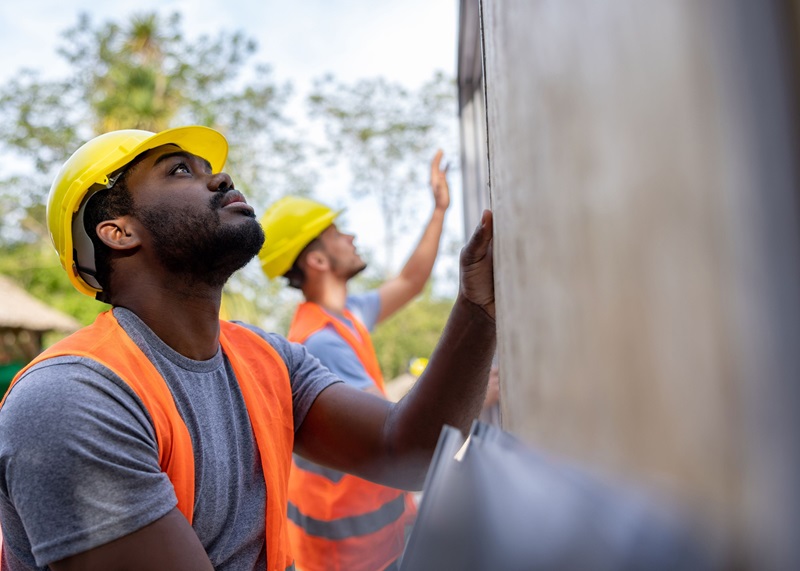ICLR and homebuilders’ association team up for resilient home construction

The Institute for Catastrophic Loss Reduction (ICLR) and the Canadian Home Builders’ Association (CHBA) have teamed up to create a task force to advance resilient home construction.
The Resilient Homes Task Force (RHTF) will conduct pilot field trials with builders using homes in various locations across Canada. They will test four specific natural hazard contexts: basement flooding, wildfire, hail and high wind.
Lessons from those outcomes will be used to create resources and guides for the residential construction industry and homeowners, outlining voluntary risk reduction initiatives for Canadian homes, ICLR said in a press release last Tuesday. The goal is to create awareness for industry and Canadians about what can be done to reduce the risk to homes and families.
ICLR’s director of research, Dan Sandink, tells Canadian Underwriter the task force is in the process of recruiting interested builders. The current plan is for the task force to run until December 2025, but it’s likely initiatives will continue well past that, he says.
“For example, we expect to have well-formed guidelines by next year, but it is likely that field trials will extend beyond 2025,” Sandink says. “Also, we plan to engage in wider communication and engagement efforts – for example, participating in training sessions for builders in different parts of Canada – and these efforts would have to extend beyond December 2025.”
The initiative involves the voluntary adoption of resilience options, with a focus on protecting homes from high wind, basement flooding, wildfire and hail.
“We are hearing from the building industry that already builders in different parts of Canada are applying some measures that we consider to be resilience options — for example, wildfire protection in B.C. and Alberta and high wind protection in Saskatchewan and Alberta.”
Sandink says the task force would like to work with builders in regions vulnerable to specific hazards. “We have started working with partners in central B.C. on wildfire resilience,” he says. “We would also like to pursue urban flood protection in the Prairies and Ontario, hail in southern Alberta, high wind wherever relevant, [such as] the Prairies and southern Ontario, and basement flood protection in urban regions almost anywhere in the country.”
Good, better and best
Sandink says the task force’s resilience options will be organized into three categories: good, better and best.
The good category includes basic options addressing key vulnerabilities that aren’t terribly expensive or difficult to implement. In some cases, builders may already be applying good measures, or these measures are integrated into local construction regulations.
Better improves on good, and best may include full application of comprehensive guides and standards concerning resilient homes (such as the CSA S520 standard for high wind or CSA Z800 for basement flood).
For hail as an example, a good option would include impact-resistant shingles, better would include impact-resistant shingles and underlayment, while best might include impact-resistant shingles, underlayment and resilient siding.
“The important message for Canadian homeowners is that their homes can be protected from increasing risk from extreme weather and wildfire,” Paul Kovacs, executive director of ICLR, says in the release. “The collaboration with CHBA is an exciting partnership for the protection of Canadian homes from increasing risk.
“The task force is working to create evidence-based solutions for more resilient new homes, renovations and homeowner maintenance,” ICLR says. “These solutions will help inform the residential construction industry and Canadians about options to protect property and residents from increasing weather extremes and catastrophic loss.”
A resilient home is one that is more durable and less prone to catastrophic loss, ICLR notes.
High Cat losses have been on the industry’s radar for a while. In 2023, insured losses from catastrophic events exceeded $3 billion for the second year in a row.
Feature image by iStock.com/Hispanolistic







